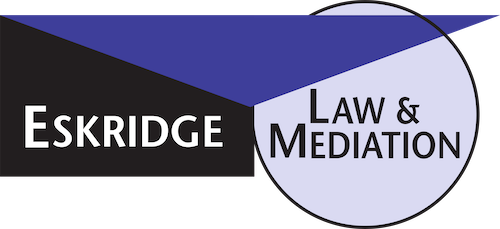August 11, 2020
An employee may take a leave of absence in California under a variety of California and federal laws, including the California Family Rights Act (“CFRA”) and the federal Family and Medical Leave Act (“FMLA”). While these two acts overlap some in coverage and usage, there are distinct differences which are important for the employee to understand.
This article does not reflect any specific acts for medical leave during the Covid-19 pandemic. For more information on Covid-19, please see our articles on:
Both CFRA and FMLA
For either act to apply, the employer must have 50 or more employees. In order for an employee to qualify under either act, the employee must have worked for the employer for a total of 1,250 hours in the past 12 months. These 12 months do not need to be consecutive for the act to apply. Both acts protect the employee’s position while on leave, and require that the employee be reinstated to the same or a similar position once the employee’s leave has come to an end. The leave provided by both acts is up to 12 weeks of protected leave in a 12-month period of time. Both federal and state laws require the employer to post specific notices explaining these rights to employees.
The CFRA and the FMLA are virtually identical, with one exception – pregnancy leaves of absence. While pregnancy leave is mentioned in this article, this article provides only a very basic overview of the CFRA and FMLA as they relate to pregnancy leave.
There are several reasons an employee may take leave under the CFRA or the FMLA. An employee may take leave for: 1) the birth/adoption/foster care of a child, 2) to care for an immediate family member with a serious health condition, or 3) when the employee is unable to work due to a serious health condition.
CFRA
A Quick Overview
As a part of the Fair Housing and Employment Act (“FEHA”), CFRA requires employers to provide reasonable accommodations to employees for pregnancy and family care. This law is specific to California, however it generally conforms with the federal FMLA. CFRA authorizes employees to take up to 12 weeks of paid or unpaid leave during a 12-month period. This leave includes job protection.
Eligibility
A serious health condition is one which requires 1) inpatient care, 2) absence for three or more consecutive days, 3) ongoing treatment, or 3) restorative surgery after an accident. Excluded from a serious health condition are ailments like the flu, headaches, and the common cold.
CFRA does not recognize pregnancy as a serious health condition. Instead, California offers pregnant employees pregnancy disability leave of up to 16 weeks, for employers with five (5) or more employees. Under CFRA, a registered domestic partner receives equal coverage of a spouse. [2 CCR § 11093(b).]
Refusal to Grant
Under the California Code of Regulations, it is an “unlawful employment practice for a covered employer to refuse to grant” either CFRA or new parent leave, unless both parents work for the employer. [2 CCR § 11088 (c).]
FMLA
A Quick Overview
FMLA is a federal law, which is administered by the U.S. Department of Labor (“DOL”). The FMLA entitles certain eligible employees to take an unpaid, but job-protected, leave for the above mentioned reasons. Unlike its state counterpart, FMLA recognizes pregnancy as a serious health condition, and therefore may run concurrently with California’s pregnancy disability leave for the first 12 weeks. [2 CCR § 11093(b).] However, under the FMLA, a registered domestic partner is not covered.
Employees may take 12 workweeks of leave in a 12-month period. In the event that an employee is requesting FMLA leave to care for a covered service member with a serious injury or illness, if that person is a close family relation (spouse, son, daughter, parent), then the employee is guaranteed 26 workweeks of leave within a 12-month period, without any employer retaliation.
Military Family Leave
Since 2008, the FMLA has extended specific protections to military families. The FMLA qualifies a spouse, parent, or child as a family member when considering qualifying for military family leave. This extension of the FMLA only applies when a person serving in the military is on covered active duty.
If a family member is deployed, or has been notified of impending deployment to a foreign country, an employee may be able to take qualifying exigency leave, which is 12 workweeks of FMLA leave.
In addition, an employee may qualify for military caregiver leave to care for an injured or ill service member or veteran, under the FMLA.
Other Types of Leave
Pregnancy Disability Leave
Under California Pregnancy Disability Leave (“PDL”), an employer with five (5) or more employees must give the employee up to 12 weeks of unpaid disability leave due to pregnancy, childbirth, or a related illness.
Paid Family Leave
Under California Paid Family Leave (“PFL”), an employee receives temporary disability insurance for the employee’s time off of work to care for an ill family member, or to bond with a new child. This insurance is administered through the State Disability Insurance program. Prior to July 1, 2020, an employee could only take six (6) weeks of PFL per year, however changes in the law now allow eight (8) weeks of leave.
New Parent Leave Act
The right to take leave under the CFRA and the New Parent Leave Act (“NPLA”) are separate. Under the NPLA, employers with 20 or more employees must provide employees with job protection when on leave for the birth of a child, the adoption of a child, or the new foster care of a child.
NEED MORE INFORMATION?
For further information on this topic, please see the Eskridge Law website at eskridge.hv-dev.com.
This article is based on the law as of the date posted at the top of the article. This article does not constitute the provision of legal advice, and does not by itself create an attorney-client relationship with Eskridge Law.
